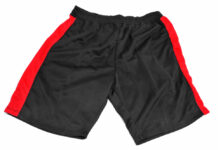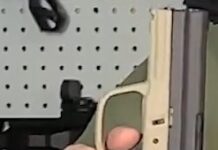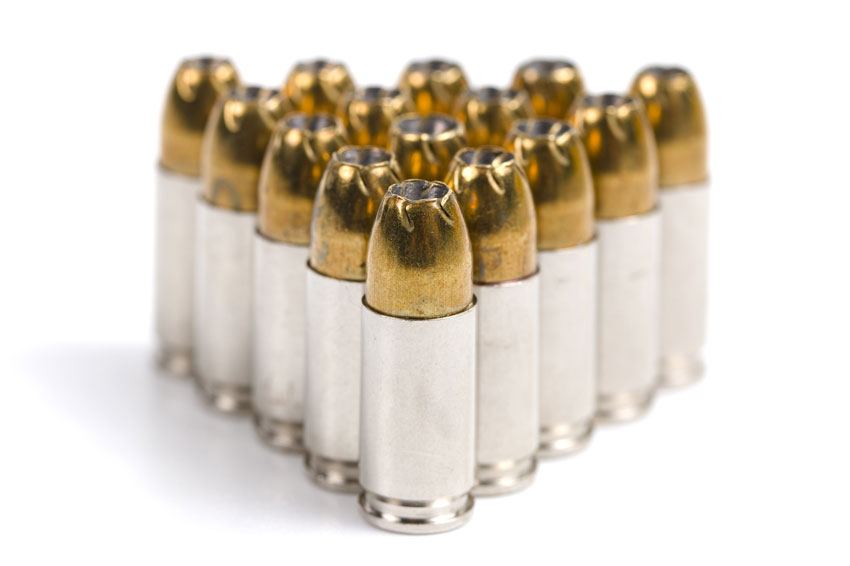Who needs to get professional, hands on, “live fire” firearms and tactical training?
You do.
Yes, you Mr. tough guy “know it all” who has “been around guns my whole life”.
Now, listen to me clearly …
I’m not saying that I believe in mandatory training for anyone that owns a gun or wants to carry one. You have a God given natural right to use whatever means necessary (including hand tools like guns) to employ deadly force to protect yourself and those you’re responsible for from death or serious bodily injury.
And any “law” that infringes on that right is a violation of your natural rights. Period. Because of this, morally you are under no obligation to follow such laws …
But here is the reality: the thought of going to jail sucks and as such, I follow even morally bankrupt laws to keep on the good side of Johnny Law and I’m guessing you do too.
Which brings us to …
Point #1: Unless you live in one of the so called “constitutional carry” states, legally, you most likely have some form of training requirement to carry concealed. (I’m ignoring open carry vs concealed carry for this discussion because I believe that youshould conceal your gun for many reasons).
Point #2. Even if there is no legal requirement to carry concealed in your state (or if you happen to be Johnny badass who doesn’t want to apply for a permit) you should still get training.
Why?
Because you’re not that good (I know). And no, you don’t know it all.
In fact, you most likely suffer from the Dunning–Kruger effect (a cognitive bias wherein relatively unskilled individuals suffer from illusory superiority, mistakenly assessing their ability to be much higher than is accurate. This bias is attributed to a metacognitive inability of the unskilled to accurately evaluate their own ability level.)
In short, you don’t know what you don’t know … yet you think you’re awesome … and that’s your problem 🙂
You need to get some professional fireams training in a 1 or 2-day class, where you experience “total immersion” for hours upon hours and you get a good combo of classroom and trigger time with plenty of rounds down range under the watchful eye of your instructor.
So that begs the question … how do you pick a good “live fire” concealed carry course?
You Have a Lot of Choices Today To Get Training …
Contrary to popular belief, you do not have to be in law enforcement or the military nowadays to get “professional grade” firearms training.
In fact, since the Global War on Terror (GWOT) began there has been an incredible proliferation of firearms trainers entering the market.
And now you, the average citizen, for the first time can get the same firearms training as a Navy SEAL — in fact — you can basically learn from the guys that teach Navy SEALS.
In other words, there is no limit to the amount of professional firearms (and other “Tactical”) training you can receive these days.
Pretty cool right?
Well, therein lies the problem … there are tons of choices and many of them look cool … but they’re not the best choice for YOU.
You Need To Define WHAT You Are Training For …
We need to look at training in context. What does context mean?
It means that because you have so many different choices nowadays, you need to determine what is the right training to take for YOUR context.
In other words, if you’re going to get some training, you should make it as close to possible as to what you’re going to encounter as a citizen carrying a concealed weapon(s).
What is your context?
You are a civilian who is carrying a concealed weapon(s) for a sudden, unforeseen crisis in which your life (or the life of someone you are responsible for) is in immediate mortal danger.
That’s it.
The Types of Training and Trainers Available To You …
Now, let’s look at your options for who to go to for training …
You basically have:
1. Former or active duty military which could be guys from elite, tier one units such as Delta Force, Navy SEALS, etc …
2. Former or active duty Law Enforcement Officers (LEO) which could include specialized LEO guys like SWAT …
3. Competition shooters either active or retired who are champions at winning “gun games” such as those played in the IDPA or IPSC …
4. Ordinary civilian firearms trainers who run the gamut from just being gun guys with a weekend basic firearms instructor certification from the NRA, all the way to guys with vast experience who may or many not overlap with all the other three categories but have definitely experience/trained with all those people.
And that’s your basic choices.
So again, let’s talk about context here.
The Military Context …
Every soldier carries a rifle, a basic load of ammo and the handgun is a last resort backup. Additionally, he has all the way up from a “Ranger buddy” to a full platoon of buddies that carry rifles, with plenty of ammo. Plus, there is somebody in that group with an even bigger, full auto squad support machine gun type deal — and more ammo.
Additionally, a soldier if he gets into a “real fight” will call in air support or some other form of reinforcements from the world’s mightiest air force and navy. Plus, retreating is frowned upon and running away coudl be desertion and you could get court martialed.
What’s more: most of the .mil guys teaching today are former spec ops which means they specialize in “direct action” missions, aka, they offensively attack a known bad guy(s) to either destory or capture with plenty of surveillance and planning the mission before hand.
Finally, in war everyone understands and accepts the idea of “acceptible casualties” (i.e. deaths to your team) and “collateral damage” (i.e. non combatant casualties) and there is typically no legal repercussions for either of these.
The Law Enforcement Officer (LEO) Context …
Most LEO officers dress like cops and carry badges. Everyone knows and can see they are armed and are the threat of the law. As such they carry full size handguns, with lots of spare ammo and either a shotgun or carbine in the patrol car. Additionally, they have lots of other buddies with guns and plenty of ammo that are either working with them (partners) or they can radio in short order.
Additionally, if they get into a “real fight” or a tough bad guy, they can radio for even more heavily armed/prepared buddies called SWAT who can perform in a similar “Direct Action” role as the aforementioned spec ops.
What’s more: they have a sworn duty to seek out, confront, and apprehend bad guys when needed. I.e. running away is typically not an option (unless it’s to call SWAT or something). Plus, the typical engagement distance for LEO is up close and personal because you can’t apprehend a bad guy without touching him (in other words, nobody has invented a way to get a bad guy to put handcuffs on himself yet).
Finally, most all LEO deadly force incidents happen in one of three parts of the duty:
1. Traffic stops
2. Bar/drinking establishment enforcement
3. Domestic violence calls
… And … the legal system is — generally — extra lenient for the boys in blue when it comes to “acceptable casualties” and “collateral damage” (LEO typically “miss” with 80% of shots fired, but in real life, you don’t just “miss” the bad guy, you get an unintended hit on something behind him downrange.)
The Competition Shooter Context …
The competition shooter is concered with one thing and one thing only — winning competitions.
That means everything from the gear he uses (including specialized “race guns” modified to whatever legal limits of the sport with light triggers, etc), the clothes he wears, the holsters he uses, and his techniques, tactics and procedures is designed to win a gun game.
The two things that win gun games are speed and accuracy. All the targets are (generally) known, and there are only time penalties for hitting “no shoot” targets, etc.
The gun game starts at the sound of a timer, after you’ve been asked “Shooter Ready?” Then told that it’s about to start when they say “Stand by” and then the timer goes off.
In other words, all gun skills/info that you learn from a competition shooter must be looked at in the light of “Is this a gun game skill or a skill that I can apply to protect myself on the street?”
Your Context and The Threats You Are Likely To Encounter …
Now, let’s talk about you and your context.
Again, you are a civilian who is carrying a concealed weapon(s) for a sudden, unforeseen crisis in which your life (or the life of someone you are responsible for) is in immediate mortal danger. That’s it.
So ask yourself if any of this applies …
*** Do you go grocery shopping with your AR-15 wearing your plate carrier?
*** Do your buddies with their rifles go shopping with you, carrying their AR-15’s, wearing body armor, using small unit tactics?
*** Do you dress up as a police officer with a badge and walk around with your gun on your hip at work?
*** Do you pull over people for traffic stops? Do you go into seedy bars on the bad side of town to make arrests? Do you hop in your car and rocket off to the local trailer park to break up a fight between a naked husband and wife drunkenly trying to beat each other to death in the front yard?
*** Do you wear an IDPA legal cover garmet fishing vest with an outside the waistband speed holster (with no retention) with multiple reloads and your tactical 511 tuxedo underneath to drop the kids off at school?
As I hope is obvious by now, there are a lot of things that you need to take into consideration when it comes to selecting proper training for yourself and your family because your daily life is much, MUCH different than that of a police officer, soldier or gun game competition.
So What Do You Need To Know?
Given what we now know, the typical “sudden, unforeseen crisis” that a civilian concealed carrier is likely to encounter is:
1. Violent criminal who wants your money, or your body, and is willing to cause you death or serious injury to get it (or just enjoys causing death and/or serious injury and today he/she picked you).
This will most likely happen outside your home, but very often these predators will invade your home if it suites them to do the same.
2. Followed, rather distantly, by the possibility that a terrorist or other lone wolf active killer (and his buddies) decided the shopping mall, church, movie theater or other public place you’re enjoying with your family looked like a good place to try to set a record for most murders in the least amount of time.
(Typically, the “active killer” lone wolf guys are easy enough because they encounter resistane and either give up, kill themselves, get killed/shot by an armed citizen or do the “suicide by cop” thing. It’s the Jihadist Johnnie active killer who brings his rifle and his body armor and possibly his buddies that is actually a determined killer — he won’t just give up at the first sign of resistance and is a much harder foe. All this is a discussion for another time though)
So Where Should You Get Training For Concealed Carry?
Given all this knowledge … again, what is the best type of training to get?
It depends.
The point is, you should be looking for training through the lens of “does it fit my context” …
Instead of thinking “Wow! This Navy SEAL, Delta Force, Whiz Bang Operator Ninja dude has a really cool class where I can dress up and wear my AR-15 and shoot 1,000’s of rounds!”
Now, there is NOTHING wrong with other types of training, but for this article, I’m distinctly trying to give advice on what type of training the average civilian concealed carrier should take — if not first — at some point.
What Skills Do You Need?
I’ll briefly cover a few different sources that give us good data as to how guns are used to save civilian lives since we know that general LEO officer involved shootings aren’t applicable to us (because we’re not cops) and neither are military fights (because we’re not fighting a war).
First is FBI and DEA undercover agent data. This is because, by the nature of their work, they often operate in plain clothes and carry concealed handguns.
They don’t make traffic stops, they don’t do bar enforcement, and they don’t go to domestic violence calls on the radio. And they’re certainly not war fighters.
In fact, I was surprised when Tom Givens told me that around half of all FBI shootings occur because some thug doesn’t realize they’re Law Enforcement and tries to hold them up or carjack them!
The good thing about the FBI and DEA data is the recording of it, because by nature of their jobs they have to report these gun uses and give good facts and details.
In addition to that we have sources of data like the NRA who collect successful defensive gun uses but that data is often skewed to look like you will most likely need your gun at home because that’s where the most defensive gun uses are recorded.
In other words, it’s causation vs correlation because most gun owners do not carry their gun with them each and every day. But almost all of them keep their gun at home. Therefore when crime visits outside the home, they are typically victim statistics and when the crime comes inside the home, they are typically successful gun defense statistics.
But that info is still valid to look at as well as the NRA reports on uses outside the home or at places of business, etc
Finally, we all owe a great deal of gratitude to Tom Givens for being smart enough to collect and investigate the incidents his students have been involved in.
Tom Givens, who runs Rangemaster Training in Memphis Tennesse has trained – literally — thousands of civilian students how to use guns for self defense. He has debriefed 63 of his students that had to use their guns for self defense and has a good data set.
As Tom likes to say, “nobody ever describes a gun fight they were in as ‘average'” so what does a “typical” gun fight with the armed civilian look like?
*** Defender is in civilian clothing with concealed handgun
*** Majority at 3-5 yards (“conversational distance”) with 15 to 25yds happening often enough to be of concern
*** Number of shots fired is fairly low but there are numerous exceptions and a gun with “on board” capacity of at least 10 rounds (i.e. without a reload) is recommended.
In Conclusion?
To wrap all this up …
Any type of training is better than none because you’ll get to practice and it’s fun. So good for you. But for best results, look for training that can teach you:
*** Fast, efficient presentation/draw from concealment in your every day civilian clothes (NOT tactical clothes)
*** The ability to deliver multiple fast, accurate, shots into an anatomically important area of the human body at 3-5 yards in less than 3 seconds.
*** The ability to be able to make “good hits” on these same anatomically valuable targets from 7 to 25 yards in a reasonable amount of time.
*** The ability to reload your gun quickly and efficiently (this is most important if you’re carrying a gun with less than 10 rounds of capacity)
*** The ability to rapidly move “Off The X” — off the line of force — aka a sidestep while being able to draw from concealment and deliver the first of the aforementioned multiple fast, accurate hits.
And possibly MOST important is a class full of the numerous so called “Soft skills” that you need in order to carry a gun to include (but not limited to):
*** How to carry your gun, concealed every day of your life and the problems you’re going to run into (gun free zones, concealing, friends/family, etc)
*** Discussion/Tips on concealement holsters, garments, and wear
*** How to do seemingly normal things like use a public restroom with a concealed handgun without making a serious mistake!
*** “Enough” info on the legal ramifications of deadly force
*** Examples and real descriptions of the violent criminal and how he operates
*** Examples showing the absolute difference between “Social Violence” and “Asocial violence” and why this difference is critical
*** LOTS of training on decision making because unlike cops or military when your gun comes out of the holster at the wrong time as a civilian you broke the law (brandishing) and you better have a good reason–and if you shoot someone you better damn well be sure they needed to be shot
… etc, etc …
In other words, effective training for the civilian concealed carrier has a lot more to do with things OTHER than just pulling triggers and looking like a badass, so plan accordingly and look for a concealed carry training class that is truly going to meet your needs

![Case Study: Defensive Gun Use [Video] NSFW](/wp-content/uploads/2025/07/Depositphotos_282075792_S-218x150.jpg)








![What Level Holster Should You Be Using? [Video]](/wp-content/uploads/2024/04/Depositphotos_44548439_S-218x150.jpg)


![How Many Shots Will It Take? [Video]](/wp-content/uploads/2025/06/Depositphotos_2724272_S-218x150.jpg)






















![Optic Ready vs Milled slides? [Video]](/wp-content/uploads/2024/02/image-3-100x70.png)
![[Checklist] What Gear You Need To Take Pistol, Rifle & Shotgun Training Courses [Video]](/wp-content/uploads/2023/07/Depositphotos_275087632_L-100x70.jpg)
![What is in Carter’s 2023 EDC? [Video]](/wp-content/uploads/2023/07/Depositphotos_146856137_L-100x70.jpg)



Thanks. First partition I’ve come across and needed to take in. The distinctions are vital, but only had hint of them until expressed in your article. Well put, agree Big Difference between Spec Ops, Cops and me. In fact and under the law and under eyes of DA and jury. Lots to think about, but appreciate your bottom line that appears through out your article: what are you going to need?
I’m currently looking for a course like this here near Charleston, WV. Any suggestions? Please email me directly. Thank you
This is exactly what I need. WHERE IS IT OFFERED???
Agree with your thinking; best for civilian are those who train to be in similar situations during an attack. Have not found many in search in net re: DEA FBI who do training.
Comments are closed.